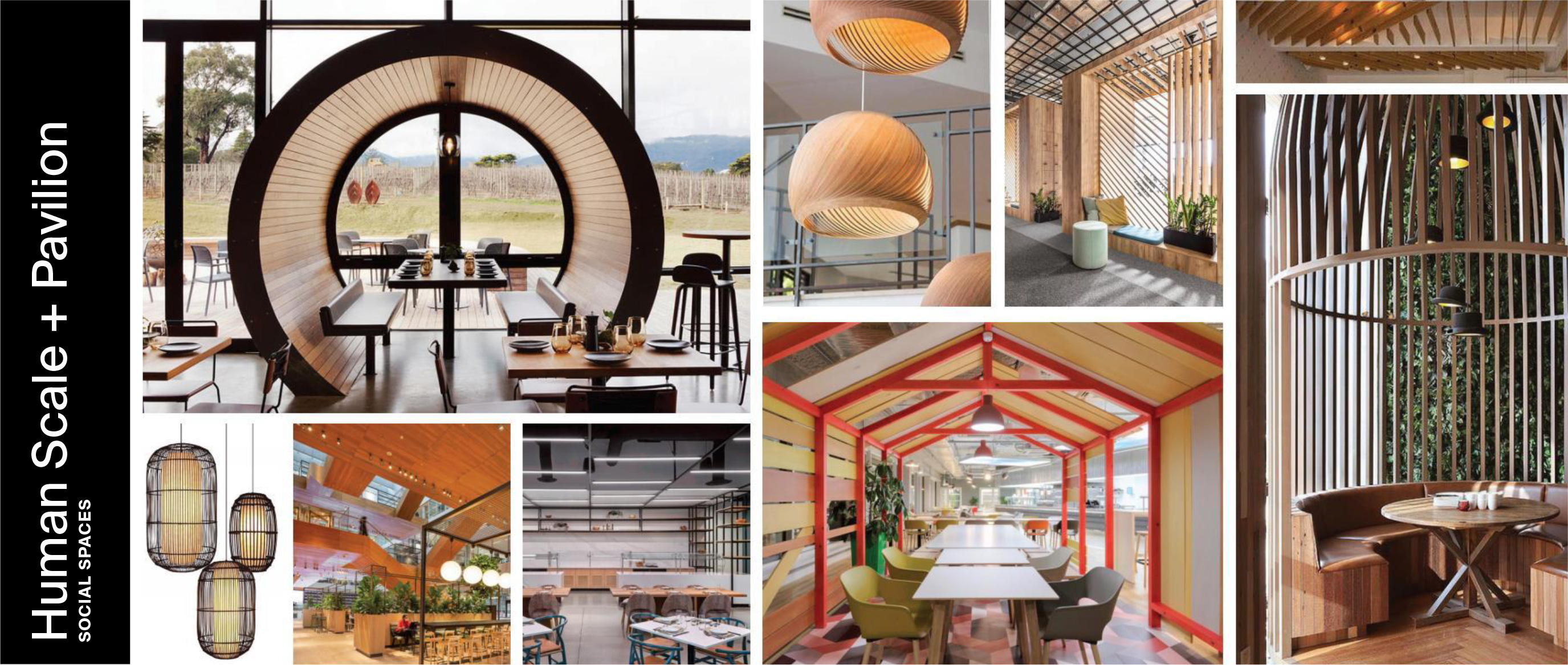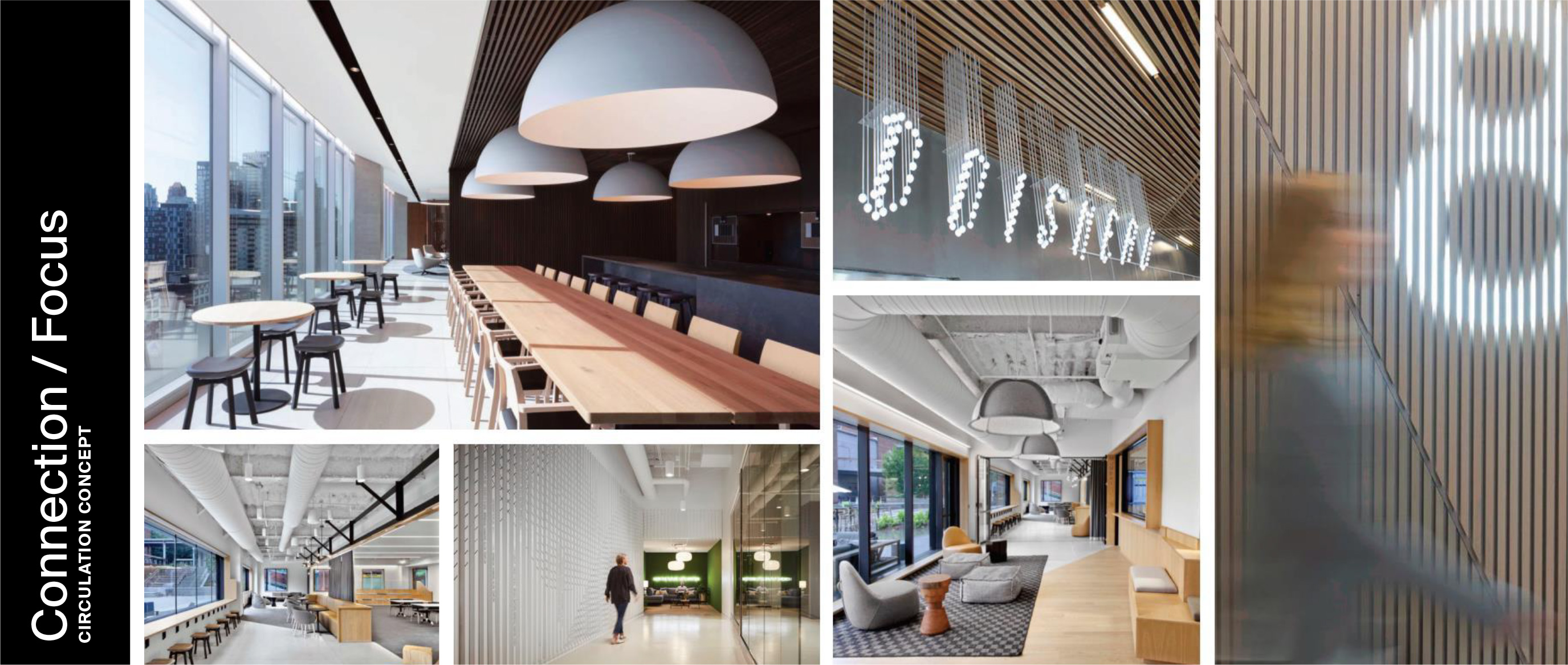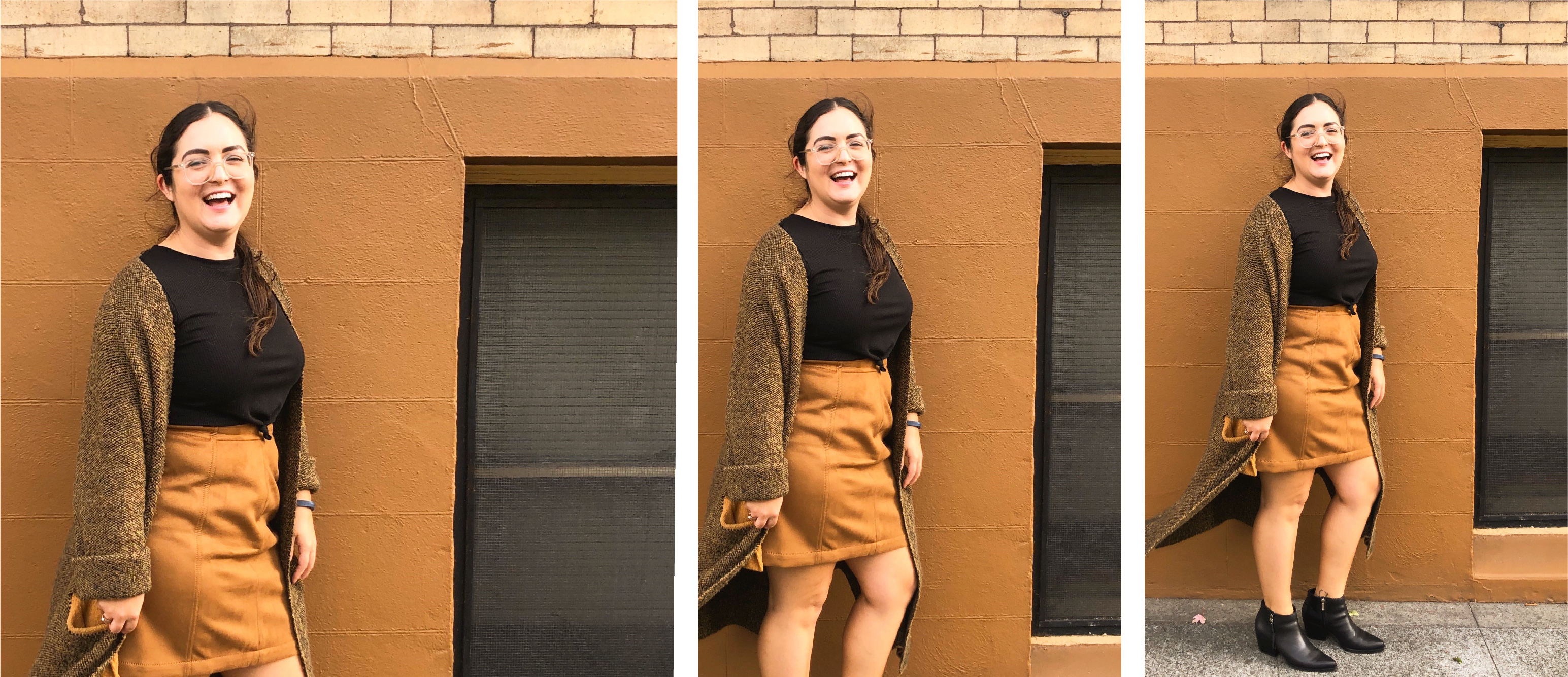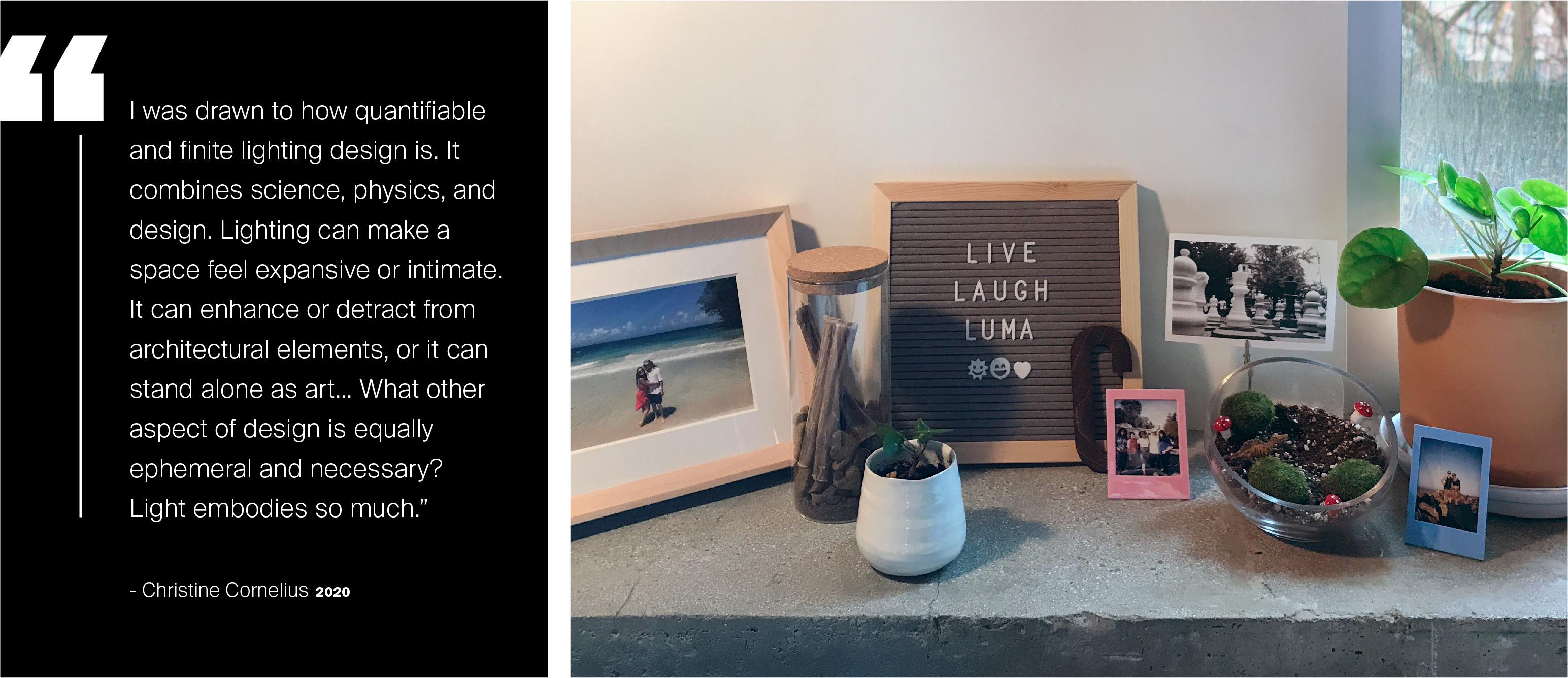What inspired your career shift from interior design to lighting design?
It started in San Francisco. I began working at an architecture and lighting firm as an interior architect. That's where I was exposed to lighting designers outside of my college professors for the first time. Until then, I had only scratched the surface of what it meant to be a lighting designer. The more I learned about lighting, the less abstract it was and the more I realized it was a path I wanted to pursue.
Specifically, I was drawn to how quantifiable and finite lighting design is. It combines science, physics, and design. Lighting can make a space feel expansive or intimate. It can enhance or detract from architectural elements, or it can stand alone as art. As an interior designer, I felt stuck and craved working with a different medium. What other aspect of design is equally ephemeral and necessary? Light embodies so much.
Once you decided to pursue lighting design, how did you go about it?
Like any journey worth taking, my path to lighting design didn't follow a straight line. After a few years of living and working in San Francisco, I decided to take a break and spend some time with family in the Sierra Nevada mountains, near Lake Tahoe. Rejuvenated, my partner and I moved to Seattle, a city I knew from attending Cornish College of the Arts. I continued working as an interior designer while staying open to opportunities in lighting design. Eventually, I connected with Gabrielle Serriere, a senior lighting designer at Luma who referred me to the firm’s Seattle office. That’s how I ended up breaking into the lighting world.
What differences have you noticed between working in interiors and lighting?
In interior design and architecture, there are so many moving pieces — the details of every finish, the items that need to be reviewed, the sheer volume of the scope of work. As a lighting designer, I’m able to focus on one specific piece of the larger puzzle, honing my craft in a niche field. Lighting design has a smaller scope but it requires juggling multiple projects. Like most careers, both interior and lighting design have the challenge of managing workload, just from a different perspective.
How does your background in interior design inform your job today?
Lighting design is taking the ideas of an interior designer or architect and bringing them to life through illumination. I’m able to leverage my previous experience because I understand their challenges. I can help them find solutions more quickly because I’ve been there. When a client says, “I need this kind of decorative,” that’s one of my favorite treasure hunts! I also enjoy lighting design from a relationship standpoint. When I was working in interior design, I didn’t have much crossover with my design friends and colleagues. Now, as a consultant at Luma, my peers can bring me into their projects and we can collaborate.
Does Luma’s affiliation with PAE influence your work?
I love working here because of PAE’s commitment to sustainability. Lighting design, inherently, helps with sustainability because we use energy-efficient fixtures and leverage daylight. I hope to push that even further by developing a fixture that’s compostable or whose parts are completely recyclable — a cradle-to-cradle fixture, all guts included! Even a take-back program from manufacturers would be an awesome first step. We're not there yet, but with the support of everyone here, it feels possible.
- 1
- 2
- 3
- 4



